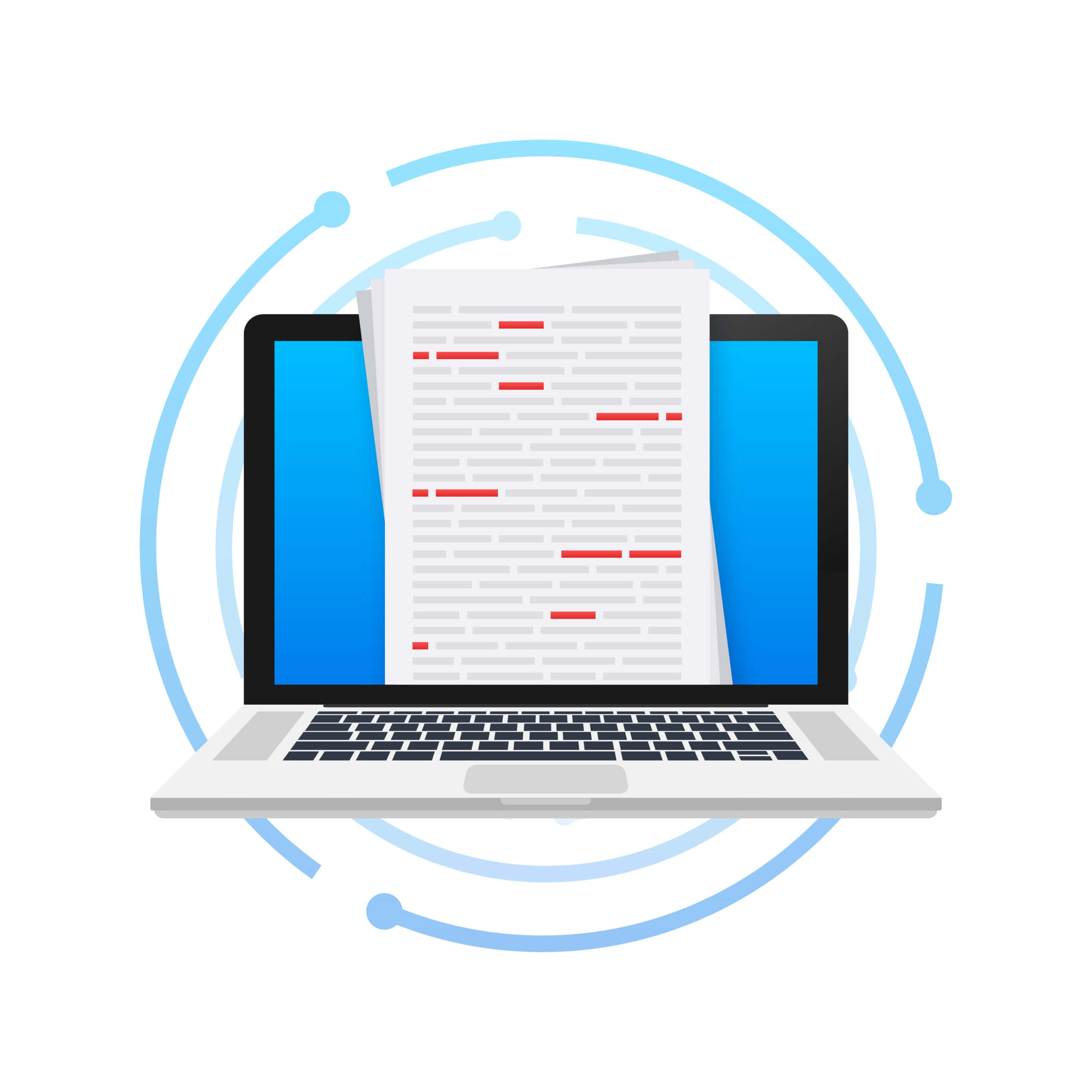2023 Writers Guide to AI Proofreading and Editing Hacks
Welcome to the writer’s life in the digital age—where the art of stringing words together is only part of the story. The secret chapter? It’s using AI as your secret weapon for proofreading and editing hacks that not only sharpen your prose but also carve out precious time for the cornerstone of your business: landing new clients.
Think of AI as the Robin to your Batman in the world of writing, a sidekick that’s ready to tackle the heavy lifting of editing while you keep your eyes on the prize—growing your client list. In this next section, you’re not going to find another run-of-the-mill pitch for AI tools. Instead, I’ll cut straight to the chase, offering you concrete, tested strategies to wield AI to boost your writing efficiency, especially in the critical stages of proofreading and editing.
As a writer, the lure of a blank page and the dance of words is pure bliss. But let’s be real: the grind of proofreading and the nitty-gritty of editing can be less than thrilling. That’s where AI steps in—your cost-effective ally that brings your content closer to perfection without the high cost of a professional editor.
Ready to unlock the full potential of your writing with proofreading and editing hacks powered by AI? Keep reading as we unveil the tools and tricks that will not only refine your content but revolutionize your entire writing process, saving you time for what really matters—capturing new business and turning prospects into loyal clients.
Proofreading vs. Editing: What is the Difference?
Editing focuses on improving the content’s overall quality, addressing elements like structure, clarity, and coherence. In contrast, proofreading is a final review to catch and correct superficial errors such as spelling, grammar, and punctuation mistakes before publication.
4 Ways to Use AI to Edit Your Work
Below are just a handful of some of the ways I use AI to help me in my daily workflow when it comes to editing.
1. Seek AI Feedback on Voice and Tone.
Mastering the subtleties of tone and voice is essential for any writer looking to captivate their audience. Yet, every writer knows the frustration of hitting a mental block, unable to pinpoint the exact tone or voice required for a piece. The traditional solution has been relentless self-editing, a cycle of writing and rewriting that can be exhausting and often unproductive. But what if there was a remedy for this common writer’s ailment? Look no further than the capabilities of artificial intelligence.
For those moments when the words won’t flow, I’ve found a reliable ally in AI-driven writing assistants like Quillbee. They’re designed to aid you in breaking through those mental barriers. The process is straightforward: select the text that doesn’t seem to resonate and prompt Quillbee with your desired adjustments. For example, I’ve recently been enamored with the tool’s ability to transform my prose into what I call ‘corporate-speak,’ which can be particularly challenging to nail down.

I encourage you to experiment with Quillbee the next time you face a block. It’s not just about finding the right words; it’s about rediscovering your rhythm in writing. By using AI as a creative partner, you can bypass the block and channel your energy into what writers do best—crafting ideas into compelling written narratives.
2. Condense or Expand your Writing in real-time.
Whether you’ve just taken on a project with specific word count requirements or your client is looking for content that’s concise and impactful, you don’t need to start from scratch. Quillbee is the tool that can streamline this process for you.
For instance, if you need to distill a section of your blog post to make the message clearer and more succinct, Quillbee has got you covered. Simply select the text in question and click on the ‘Condense’ feature. Quillbee will then provide a more compact version of your text without losing the essence. You can review this condensed paragraph and decide whether to integrate it into your original draft.
Conversely, if you’re diving into a complex subject and time is of the essence, Quillbee’s ‘Expound’ feature comes to the rescue. With this tool, you can quickly flesh out a brief draft into a more detailed and extensive version. After Quillbee does its magic, you hit ‘Replace’ to make the changes effective. It’s straightforward and efficient.
I find the ‘Expound’ and ‘Condense’ functions particularly useful when I’m navigating between the needs of short-form and long-form content. If an article is overextending beyond the limits of a short piece, I use ‘Condense’ to trim it down. On the flip side, when a topic requires a more thorough explanation that long-form necessitates, I select ‘Expound’ to enrich the content. This versatility is what makes Quillbee an indispensable tool in my writing arsenal.
3. Need a Thesaurus? Use AI for Contextual Thesaurus Suggestion.
Your ultimate AI writing partner, Quillbee, is supercharged with the ChatGPT generative AI model, offering an even more powerful suite of language tools. Imagine having a thesaurus that’s not just comprehensive but intelligent, understanding the context of your writing. This is precisely what Quillbee, integrated with ChatGPT, brings to the table.
With this tool, you’re equipped to refine your prose by exploring synonyms, homonyms, and antonyms with ease.
Picture this: you’ve poured over your draft, but the words don’t seem quite right. Perhaps they lack punch precision or simply don’t convey the nuance you intended. Quillbee comes to your rescue. Simply highlight the word or words that feel off, input commands like “synonym,” “homonyms,” or “antonyms,” and Quillbee will present alternatives to weave into your text.
And if the first suggestion doesn’t strike the right chord? Quillbee allows you to keep generating options until you find the perfect match.
But what if you need more than a single replacement? What if you’re searching for an array of choices to consider at your leisure? In that case, AI Chat agents like ChatGPT, Claude, or even Bing can compile extensive lists of linguistic alternatives. The only trade-off is transferring those suggestions manually into your document, a step that Quillbee’s direct integration makes unnecessary.
Quillbee stands out by enabling these adjustments within the document itself, streamlining your workflow. So, next time you’re fine-tuning your draft and need that ideal word, remember that Quillbee, empowered by ChatGPT, is your go-to for precision and variety in your word choices.
4. Use AI for Active and Passive Voice Recommendations:
Crafting content with the right voice can significantly impact readability and engagement. Active voice is often encouraged to make writing more dynamic and clear, but passive voice has its place in crafting a certain tone or style.
AI can analyze your text to suggest where active voice might enhance a sentence or where passive voice is more suitable, depending on your intended effect.
For example, you can use Quillbee’s rewrite button to turn passive prose into active content with just a click. This instantaneous feedback can teach you to think more critically about your sentence structure, improving your writing skills in the process.
AI Tools for Proofreading
Having explored practical AI editing tips, let’s switch gears to proofreading with AI.
Think of proofreading as the fine-tooth comb of your writing routine, where you weed out the typos and grammar glitches before your work hits the audience.
MS Word, Google Docs, Notes
Word-processing programs like Word, Google Docs, and Notes come with grammar and spell-check baked-in. It’s just a matter of finding out how to turn those features on.
Microsoft Word: Navigate to File > Options > Proofing in the menu.
For a more enhanced AI-driven writing journey, seek out the Co-Pilot feature in your toolbar. Activate it, and you’ll begin to receive intelligent suggestions on-demand, elevating your editing process.
Google Docs: After opening a document, in the top left, click (Spelling and Grammar). You can then use the suggestions provided or ignore them. The choice is yours. If you have spelling and grammar suggestions turned on, misspelled words are underlined in red, and grammar suggestions are underlined in blue. Learn how to turn suggestions on or off.
Want to amplify your writing with AI? Start by opening Google Docs and spotting the “Help Me Write” feature, marked by a pencil icon on the left side of your page. Clicking this will launch the suggestion pane, granting you access to this smart AI assistant.
Notes (IOS): If you are like me and rely on the app for all kinds of writing, treat yourself by enabling the Spelling and Grammar check. It’s simple—go to your Notes menu, select Edit, and choose Spelling & Grammar.
Grammarly
Grammarly stands out as a widely adopted AI proofreading solution that utilizes sophisticated algorithms to detect and correct errors in grammar, spelling, punctuation, and style. With its easy accessibility as a browser extension and a mobile app, Grammarly ensures seamless integration across different platforms. It provides a comprehensive quality score for your document, complete with suggestions for improving sentence construction, word choice, and overall tone, making it a versatile tool for writers looking to refine their work.
Whitesmoke
WhiteSmoke is designed as an AI-driven proofreading assistant tailored to help writers polish the style and clarity of their text. It provides actionable recommendations for fine-tuning sentence structure, style, and readability, along with essential grammar corrections. Available both as a browser extension and a desktop application, WhiteSmoke offers flexible options for improving your writing wherever you choose to work.
Ginger Software
Ginger Software delivers an AI-powered proofreading experience aimed at refining the style and clarity of your writing endeavors. It suggests improvements in sentence flow, stylistic choices, and readability, alongside fixing grammatical, spelling, punctuation, and syntax errors. With its dual availability as a mobile application and a browser extension, Ginger Software provides convenient and versatile assistance for writers looking to enhance their work.
Hemingway Editor
The Hemingway Editor serves as a straightforward and potent AI proofreading aid, focusing on elevating the readability of your text. It highlights the use of adverbs, passive voice, and complex sentences, suggesting clear-cut ways to simplify and clarify your writing. With options for use as a browser tool or a desktop application, the Hemingway Editor is a valuable asset for any writer aiming to craft content with greater precision and ease.
Thank You for Exploring Our Proofreading and Editing Hacks.
Step into the next era of writing with Quillbee. Streamline your craft, perfect your editing, and guarantee your content shines without errors—all with Quillbee’s AI-powered toolkit, designed for today’s writer.
Shake off the intimidation of proofreading and editing. Enhance your abilities and productivity with Quillbee. Transform how you write, starting now—click here to try Quillbee.







